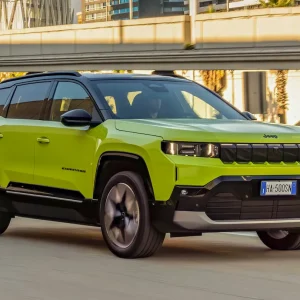The Swift has always been a niche choice for those in search of a supermini, but its value-for-money credentials, fun-to-drive nature and likeable styling have long made it a great small-car choice.
Although historically Suzuki has very much been a retail brand, with just 30% of UK sales heading into fleet, the firm has big plans to double this figure in 2017 to 10,000 cars sold in the corporate arena.
Alongside the new Ignis, a car that has already exceeded expectations since going on sale in January, the new Swift will be key to hitting those ambitious targets.
New for 2017, the third-generation Swift takes a step forward for practicality and quality, while it aims to retain its playful and cheeky nature that has won the hatchback many fans over the years.
Shorter but roomier inside
At a time when most of the Swift’s rivals are growing in size, Suzuki has broken the trend here and this latest car is actually 10mm shorter than the previous generation. Crucially though, despite shrinking in length, the wheelbase is actually 20mm longer, which means it’s roomier inside. At 265 litres luggage space has also grown, by 25% – a marked improvement – although it’s still lagging behind rivals like the Skoda Fabia, Vauxhall Corsa and Citroen C3.
The new car is lower than its predecessor, making for a sportier drive, and sheds up to120kg in weight, meaning running costs have also improved. Available now as a five-door only, headroom is generous throughout and there’s a decent amount of legroom on offer in the rear too.
Petrol only
No diesel engine is offered for now and the new Swift is available with two petrol choices – a 1.2-litre with 90hp or a 1.0-litre unit offering 111hp.
The naturally aspirated 1.2 is the cleanest of the two engines, and is the only option available with the firm’s AllGrip all-wheel drive system, not something you usually encounter in the supermini sector.
This engine is also mated to Suzuki’s ‘SHVS’ 48v mild hybrid system, which uses a small lithium-ion battery pack beneath the passenger seat to help boost power when accelerating with energy recuperated from braking as well as allowing smooth and silent restarts when pulling away from your drive or junction.

One of the key benefits to using this system is that it helps keep emissions and running costs low, in our car’s case, down to 101g/km with a combined fuel economy of 65.7mpg – very good figures when you consider the extra weight the all-wheel drive capabilities add.
Out on the road the Swift is characterful and good fun to drive. We prefer the 1.0-litre BoosterJet as it’s more eager to accelerate and quieter too; however, the 1.2’s 90hp and 120Nm of torque provides enough pull to make decent progress. The steering is light, the handling nippy and the Swift feels quicker than the 12.6-second 0-62mph time suggests too.
Having the AllGrip system does offer a little more grip on wet roads and in the corners, although it’s barely noticeable, and ride quality is on the firm side with a fair amount of road noise intruding into the cabin also.
Top of the range
You can buy the Swift in three trims: SZ3, SZ-T and SZ5. Here we’re testing the latter and it comes filled to the brim with kit.
Standard equipment includes sat-nav, adaptive cruise control, reversing camera, keyless entry and start, LED lights with automatic full beam, Apple CarPlay, autonomous emergency braking and air-con.

You also get the aforementioned mild hybrid system as standard, and only in this spec is the AllGrip system available.
Inside sees a lift in cabin quality and all the functions and controls are easy to navigate your way around. You’ll still find a fair few cheap plastics lurking though, particularly around the doors and central cubbies.
The costs
Residual values for the new Swift are very good indeed, with this particular model retaining 34.8% of its value after three years and 60,000 miles. That’s better than the comparable C3, Fabia and Corsa.
Thanks to the mild hybrid system, running costs are also kept in check and overall our test car costs 41p per mile – cheaper than the Corsa and competitive with the Fabia and C3.
Admittedly though, this isn’t the version of the Swift we’d buy. The small handling benefit of the AllGrip system doesn’t outweigh the compromises on price and running costs, and we’d probably opt for the 1.0-litre BoosterJet too as it’s a more characterful all-round engine.
Suzuki Swift 1.2 SZ5 SHVS 4×4 |
| P11D Price: £15,304 |
| On sale: June 2017 |
| Residual value: 34.8% |
| Depreciation: £9,979 |
| Fuel: £5,164 |
| Service, maintenance & repair: £2,216 |
| Cost per mile: 41.1p |
| Fuel consumption: 62.8mpg |
| CO2 (BIK Band): 101g/km (19%) |
| BIK 20/40% per month: £48/£97 |
| Boot space: 265 litres |
| Engine size/power: 1,242cc/90hp |





